- Home
- Joyce Carol Oates
On Boxing Page 3
On Boxing Read online
Page 3
Madness?—or merely discipline?—this absolute subordination of the self. In any case, for Marciano, it worked.
Tommy Hearns was a little cocky, and I had something for him.
—MARVIN AGLER
No sport is more physical, more direct, than boxing. No sport appears more powerfully homoerotic: the confrontation in the ring—the disrobing—the sweaty heated combat that is part dance, courtship, coupling—the frequent urgent pursuit by one boxer of the other in the fight’s natural and violent movement toward the “knockout”: surely boxing derives much of its appeal from this mimicry of a species of erotic love in which one man overcomes the other in an exhibition of superior strength and will. The heralded celibacy of the fighter-in-training is very much a part of boxing lore: instead of focusing his energies and fantasies upon a woman the boxer focuses them upon an opponent. Where Woman has been, Opponent must be.
As Ali’s Bundini Brown has said: “You got to get the hard-on, and then you got to keep it. You want to be careful not to lose the hard-on, and cautious not to come.”
Most fights, however fought, end with an embrace between the boxers after the final bell—a gesture of mutual respect and apparent affection that appears to the onlooker to be more than perfunctory. Rocky Graziano sometimes kissed his opponents out of gratitude for the fight. One might wonder if the boxing match leads irresistibly to this moment: the public embrace of two men who otherwise, in public or in private, could never approach each other with such passion. Though many men are loudly contemptuous of weakness (as if eager to dissociate themselves from it: as during a boxing match when one or both boxers are unwilling to fight) a woman is struck by the admiration, amounting at times to awe, they will express for a man who has exhibited superior courage while losing his fight. And they will express tenderness for injured boxers, even if it is only by way of commentary on photographs: the picture of Ray Mancini after his second defeat by Livingstone Bramble, for instance, when Mancini’s face was hideously battered (photographs in Sports Illustrated and elsewhere were gory, near-pornographic); the much-reprinted photograph of the defeated Thomas Hearns being carried to his corner in the arms of an enormous black man (a bodyguard, one assumes) in solemn formal attire—Hearns the “Hit Man” now helpless, semiconscious, looking very like a black Christ taken from the cross. These are powerful, haunting, unsettling images, cruelly beautiful, inextricably bound up with boxing’s primordial appeal.
Yet to suggest that men might love and respect one another directly, without the violent ritual of combat, is to misread man’s greatest passion—for war, not peace. Love, if there is to be love, comes second.
I know I’m not a bad fighter. I try so hard at something I like doing. I love boxing. I dream of being a fighter. I see myself winning the title. I don’t know which one. I see myself being picked up, carried around, getting my belt. Sometimes I see it in slow motion…
—a thirty-four-year-old welterweight who has lost nearly all his fights, usually by knockouts
An “opponent” is known in the boxing trade as a man who loses, and is dependable. Matched with a younger, promising boxer with financial backing he will give a decent showing, he will very likely not collapse in the opening seconds of the opening round, and he will not, certainly, mar the record of the other boxer. He may have dreams of winning a “title” but his value to the trade is that he helps to build up (i.e., to inflate) another boxer’s record. His name is always unknown—indeed, he is likely to have several names or aliases. His career is a foregone conclusion: he has none. He works for a living by way of being a human punching bag.
Opponents are also known as “stiffs” and “bums”—as in Joe Louis’s “Bum-of-the-Month” matches after Louis had cleared the heavyweight division of serious contenders for his title.
The world’s consistently highest-paid athletes are American boxers but it does not follow that boxers as a class are the highest paid athletes. The very opposite is the case. Impoverished people prostitute themselves in ways available to them, and boxing on its lowest levels offers an opportunity for men to make a living of a kind. In fact, if a boxer is fortunate and isn’t injured, boxing will pay him better wages than most of the jobs available to unskilled and uneducated men in our post-industrial society. (After Michael Spinks won an Olympic gold medal he quit boxing and went to work scrubbing floors and cleaning toilets in a St. Louis chemical factory. But conditions in the factory were so bad he had to return, he said, to boxing: “Heck, breathing those chemicals, I could have died faster there than in the ring.”) And boxing in circumstances where casino gambling and not safety is a priority—Atlantic City, for instance, and not New York City with its stringent boxing regulations—is likely to be highly tempting. The top of the pyramid is small, the base broad, shading out into the anonymous subsoil of humanity.
The Ring magazine, “The Bible of Boxing,” publishes the results of over one thousand fights in every issue. Even boxing’s many ranked and overrated boxers constitute a small number of the men who are licensed to box in the United States and elsewhere. The Ring Record Book lists such boxers as Johnny D. (who has lost sixteen fights in a row, twelve by knockouts); Marcus D. (who won only his first fight years ago and has lost each subsequent match); Obie G. (who has had nine fights and has been knocked out nine times); Irving B. (who has had seven fights and has been knocked out seven times, always in the first or second round). It is such professional opponents who account for the unblemished records of others—for clearly, the up-and-coming with their straight wins and zero losses cannot have been fighting one another.
(During the 1920s when boxing was officially banned in New York, boxers fought in private clubs, not unlike speakeasies, in wholly unsupervised circumstances. Budd Schulberg writes that during the years boxing was outlawed there were in fact many more matches in New York City than there are now: each borough had its own clubs, matches were held every night of the week, boxers of all weights, ages, experience, and abilities were thrown haphazardly together, and, if a match resulted in death, the boxer’s body was likely to be dumped without identification in the river.)
With the complicity of managers and promoters, boxers of this class frequently fight under several aliases, and even with present-day regulations (in New York and Pennsylvania, for instance, a fighter who has been knocked out is automatically suspended for ninety days; in New Jersey, for sixty days) it is extremely difficult to prevent them from doing themselves harm. Desperation for money or simply for “fame” cannot be regulated. Identification is made not with boxing’s limitless supply of losers but with boxing’s very few stars, as in any other profession in which the individual can be, by way of his own intransigent will, glorified. As a trainer of opponents says, perhaps not even cynically: “There’s a new guy walking in the gym every day.”
When you’re fighting you’re fighting for one thing: money.
—JACK DEMPSEY,
former heavyweight champion of the world
That boxing is our most controversial sport, always, it seems, on the very threshold of oblivion, has not prevented it from having become a multimillion-dollar business.
For the past several years the three highest-paid athletes in the world have been American boxers. (In 1985 Larry Holmes reported an income of a little more than $6.5 million; Marvin Hagler, a little more than $5 million; Thomas Hearns, approximately $5 million. By contrast, the fourth highest-paid athlete, a celebrated football player, reported an income of only—only!—$3 million.) In his long and spotty career Jack Dempsey earned $3,500,000—prodigious for his time, though the equivalent today of only $28 million. Muhammad Ali, who earned somewhere beyond $70 million through his long career, is generally believed to be the most highly paid athlete in world history; his successor Larry Holmes is believed to have earned nearly that much. (Though figures vary, and Holmes’s career, at the time of this writing, is still extant; he claims to have $99 million in the bank—with more to come.) Individual boxing matches
sometimes bring in extraordinary sums for boxers, even accounting for the money drawn off by promoters: the losing challenger Thomas Hearns made at least $7 million in his eight-minute fight with Marvin Hagler, while Hagler made at least $7.5 million; for the first of his highly publicized matches with Roberto Duráan in 1980—which he lost on points—the popular welterweight champion Sugar Ray Leonard was paid $10 million (to Durán’s $2 million). One of the focal arguments for a title fight between Marvin Hagler and Sugar Ray Leonard was that the gate would very likely be the highest in all of boxing history: a promoter’s dream. And none of these figures takes into account various subsidiary earnings from television appearances and commercials which, in Leonard’s case, have certainly been substantial.
Indeed, these subsidiary earnings have become, for many boxers, the measure of their worth beyond the ring: the assessment, in dollars, of “consumer acceptance” of their images. (The Ring magazine is beginning to note the sums earned by boxers giving television endorsements of products…a new kind of ring “record,” it might be said.)
Money has drawn any number of retired boxers back into the ring, frequently with tragic results. The most notorious example still remains Joe Louis, who, in a desperate attempt to pay money owed in back taxes, continued fighting well beyond the point at which he could defend himself against younger heavyweights. After a career of seventeen years during which Louis virtually came to typify boxing internationally he was finally—and ignominiously—stopped by the much younger Rocky Marciano (who was as grieved by his victory as Louis by the defeat). Louis then took on a degrading second career as a professional wrestler, which ended abruptly in 1956 when, aged forty-two, he suffered injuries to his heart muscles after three-hundred-pound “Rocky Lee” stepped on his chest.
Ezzard Charles, Jersey Joe Walcott, Joe Frazier, Muhammad Ali, most recently Larry Holmes—each heavyweight champion or ex-champion continued fighting well beyond the point at which he could safely defend himself. If Ali had retired permanently at the age of thirty-six—if he had not, contrary to his physician’s advice, insisted upon fighting, two years later, the much-younger Larry Holmes—perhaps his story would have a happier ending. (When Ali was told in the mid-1970s to retire by his personal physician Ferdie Pacheco his response was to fire Pacheco.) Of all heavyweight champions only Rocky Marciano, to whom fame and money were evidently not of paramount importance, was wise enough to retire before he was defeated.
In any case, a boxer’s passion for money—for the prodigious sums earned by a very few champions—does not account for the fact that a public is willing, if not eager, to pay them these sums. Private and public obsessions mimic one another but are not identical.
Boxing is the sport to which all other sports aspire.
—GEORGE FOREMAN,
former heavyweight champion of the world
At least in theory and by way of tradition boxing is a sport. But what is sport?—and why is a man, in sport, not the man he is or is expected to be at other times?
Consider the history of gladiatorial combat as the Romans practiced it, or caused it to be practiced, from approximately 265 B.C. to its abolishment by Theodoric in A.D. 500. In the ancient world, among part-civilized nations, it was customary after a battle to sacrifice prisoners of war in honor of commanders who had been killed. It also became customary to sacrifice slaves at the funerals of all persons of importance. But then—for what reason?—for amusement, or for the sake of “sport”?—the condemned slaves were given arms and urged to defend themselves by killing the men who were ordered to kill them. Out of this evolution of brute sacrifice into something approaching a recognizable sporting contest the notorious phenomenon of Roman gladitorial combat—death as mass amusement—gradually arose. Surely there is nothing quite like it in world history.
At first the contests were performed at the funeral pyre or near the sepulcher, but, with the passage of time, as interest in the fighting detached itself from its ostensibly religious context, matches were moved to the Forum, then to the Circus and amphitheaters. Contractors emerged to train the slaves, men of rank and political importance began to keep “families” of gladiators, upcoming fights were promoted and advertised as sporting contests are today, shows lasting as long as three days increased in number and popularity. Not the mere sacrifice of helpless individuals but the “sport” of the contest excited spectators, for, though the instinct to fight and to kill is surely qualified by one’s personal courage, the instinct to watch others fight and kill is evidently inborn. When the boxing fan shouts, “Kill him! Kill him!” he is betraying no peculiar individual pathology or quirk but asserting his common humanity and his kinship, however distant, with the thousands upon thousands of spectators who crowded into the Roman amphitheaters to see gladiators fight to the death. That such contests for mass amusement endured not for a few years or even decades but for centuries should arrest our attention.
According to Petronius the gladiators took the following oath: “We swear, after the dictation of Eumolpus, to suffer death by fire, bonds, stripes, and the sword; and whatever else Eumolpus may command, as true gladiators we bind ourselves body and mind to our master’s service.” Their courage became legendary. Cicero referred to it as a model for all Roman citizens—that one should be willing to suffer nobly in the defense of the Commonwealth. In general, gladiators were slaves and condemned criminals who could hope to prolong their lives or even, if they were champions, to gain freedom; but impoverished freemen often fought as well. With the passage of time, paralleling and surely contributing to what we see as the decadence of Rome, even men of rank volunteered to compete publicly. (Under Nero, that most notorious of Roman emperors, such wild exhibitions flourished. It is estimated that during his reign from A.D. 54 to 68 as many as one thousand aristocrats performed as gladiators in one way or another, in fights fair, handicapped, or fixed. At times even women of rank competed—which matches were no doubt particularly noteworthy.) So drawn to these violent sports were Roman aristocrats that the Emperor Augustus was finally moved to issue an edict forbidding them to train as gladiators.
The origins of gladiatorial boxing are specifically Greek. According to tradition a ruler named Thesus (circa 900 B.C.) was entertained by the spectacle of two matched fighters, seated, facing each other, hammering each other to death with their fists. Eventually the men fought on their feet and covered their fists with leather thongs; then with leather thongs covered with sharp metal spikes—the cestus. A ring of some kind, probably a circle, became a neutral space to which an injured boxer might temporarily retreat. When the Romans cultivated the sport it became extremely popular: one legendary cestus-champion was said to have killed 1,425 opponents. Winning gladiators were widely celebrated as “kings of athletes” and heroes for all. By confirming in the public arena the bloody mortality of other men they established for themselves, as champions always do, a kind of immortality.
So it happens that the wealthier and more advanced a society, the more fanatic its interest in certain kinds of sport. Civilization’s trajectory is to curve back upon itself—naturally? helplessly?—like the mythical snake biting its own tail and to take up with passion the outward signs and gestures of “savagery.” While it is plausible that emotionally effete men and women may require ever more extreme experiences to arouse them, it is perhaps the case too that the desire is not merely to mimic but, magically, to be brute, primitive, instinctive, and therefore innocent. One might then be a person for whom the contest is not mere self-destructive play but life itself; and the world, not in spectacular and irrevocable decline, but new, fresh, vital, terrifying and exhilarating by turns, a place of wonders. It is the lost ancestral self that is sought, however futilely. Like those dream-remnants of childhood that year by year continue to elude us but are never abandoned, still less despised, for that reason.
Roman gladiatorial combat was abolished under the Christian emperors Constantine and Theodoric, and its practice discontinued forever. Boxing
as we know it in the United States derives solely from English bare-knuckle prizefighting of the eighteenth century and from an entirely different conception of sport.
The first recorded account of a bare-knuckle fight in England—between “a gentleman’s footman and a butcher”—is dated 1681 and appeared in a publication called the London Protestant Mercury. This species of fight, in which maiming and death were not the point, was known as a “Prize Fight” or the “Prize Ring,” and was public entertainment of an itinerant nature, frequently attached to village fairs. The Prize Ring was a movable space created by spectators who formed a loose circle by holding a length of rope; the Prize Fight was a voluntary contest between two men, usually a “champion” and a “challenger,” unrefereed but governed by rudimentary rules of fair play. The challenge to fight was put to a crowd by a fighter and his accomplices and if any man wanted to accept he tossed his hat into the ring—hence the political expression with its overtone of bellicosity—and the fight was on. Bets were commonly placed on which man would knock the other down first or draw “first blood.” Foul play was actively discouraged by the crowd; the fighters shook hands after the fight. “The Noble Art,” as prizefighting was called, began as a low-life species of entertainment but was in time enthusiastically supported by sporting members of the aristocracy and the upper classes.
England’s earliest bare-knuckle champion was a man named James Figg who won the honor in 1719. The last of the bare-knuckle champions was the American heavyweight John L. Sullivan whose career—from approximately 1882 to 1892—overlapped both bare-knuckle fighting and gloved boxing as established under the rules of the Marquis of Queensberry which are observed, with some elaboration, to the present time. The most significant changes were two: the introduction of leather gloves (mainly to protect the hand, not the face—a man’s knuckles are easily broken) and the third man in the ring, the referee, whose privilege it is to stop the fight at his own discretion, if he thinks a boxer has no chance of winning or cannot defend himself against his opponent. With the introduction of the referee the crudeness of “The Noble Art” passes over into the relative sophistication of boxing.

 Starr Bright Will Be With You Soon
Starr Bright Will Be With You Soon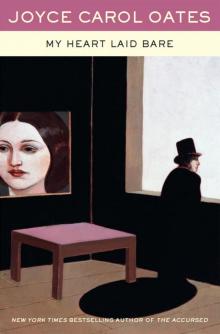 My Heart Laid Bare
My Heart Laid Bare A Fair Maiden
A Fair Maiden The Doll-Master and Other Tales of Terror
The Doll-Master and Other Tales of Terror Wild Nights!: Stories About the Last Days of Poe, Dickinson, Twain, James, and Hemingway
Wild Nights!: Stories About the Last Days of Poe, Dickinson, Twain, James, and Hemingway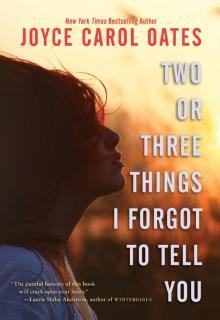 Two or Three Things I Forgot to Tell You
Two or Three Things I Forgot to Tell You Because It Is Bitter, and Because It Is My Heart
Because It Is Bitter, and Because It Is My Heart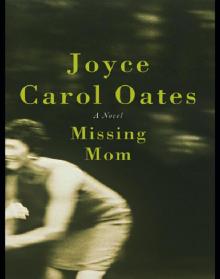 Missing Mom: A Novel
Missing Mom: A Novel The Gravedigger's Daughter: A Novel
The Gravedigger's Daughter: A Novel American Appetites
American Appetites Black Dahlia White Rose: Stories
Black Dahlia White Rose: Stories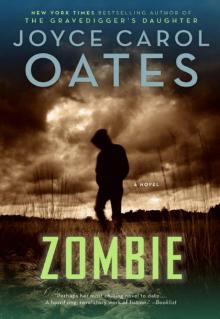 Zombie
Zombie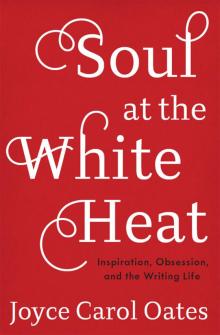 Soul at the White Heat: Inspiration, Obsession, and the Writing Life
Soul at the White Heat: Inspiration, Obsession, and the Writing Life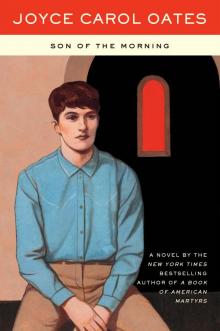 Son of the Morning
Son of the Morning Patricide
Patricide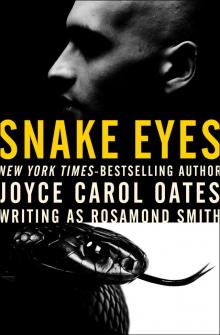 Snake Eyes
Snake Eyes Wonderland
Wonderland In Rough Country: Essays and Reviews
In Rough Country: Essays and Reviews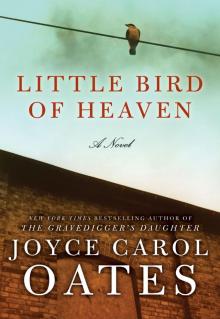 Little Bird of Heaven
Little Bird of Heaven The Haunting
The Haunting The Accursed
The Accursed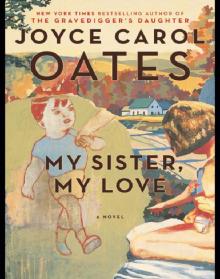 My Sister, My Love: The Intimate Story of Skyler Rampike
My Sister, My Love: The Intimate Story of Skyler Rampike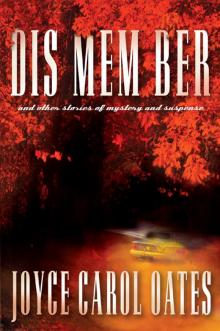 Dis Mem Ber and Other Stories of Mystery and Suspense
Dis Mem Ber and Other Stories of Mystery and Suspense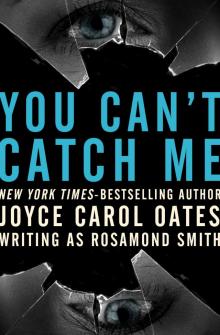 You Can't Catch Me
You Can't Catch Me Daddy Love: A Novel
Daddy Love: A Novel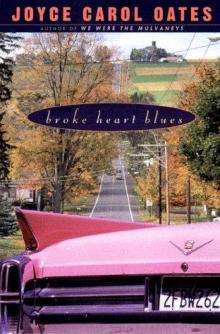 Broke Heart Blues
Broke Heart Blues I'll Take You There
I'll Take You There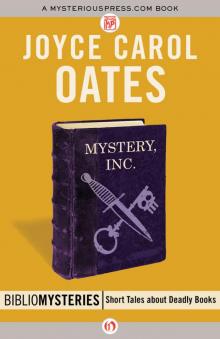 Mystery, Inc.
Mystery, Inc. We Were The Mulvaneys
We Were The Mulvaneys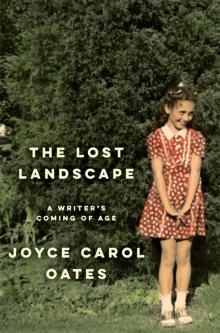 The Lost Landscape: A Writer's Coming of Age
The Lost Landscape: A Writer's Coming of Age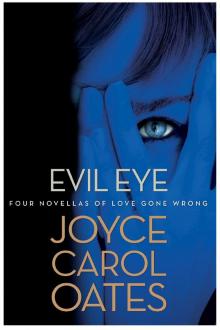 Evil Eye: Four Novellas of Love Gone Wrong
Evil Eye: Four Novellas of Love Gone Wrong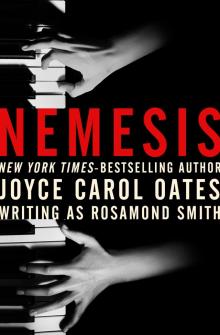 Nemesis
Nemesis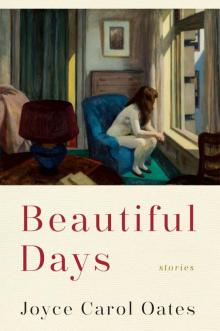 Beautiful Days: Stories
Beautiful Days: Stories On Boxing
On Boxing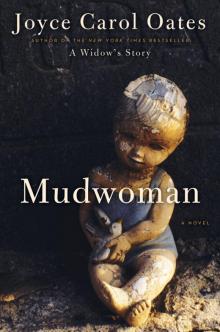 Mudwoman
Mudwoman Hazards of Time Travel
Hazards of Time Travel Night-Gaunts and Other Tales of Suspense
Night-Gaunts and Other Tales of Suspense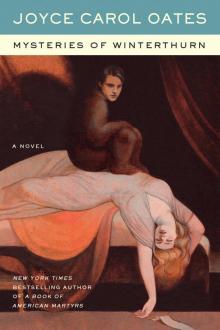 Mysteries of Winterthurn
Mysteries of Winterthurn New Jersey Noir
New Jersey Noir Sourland
Sourland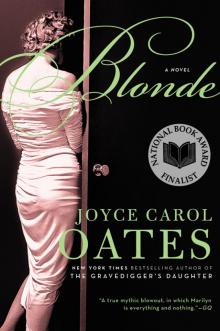 Blonde
Blonde The Corn Maiden: And Other Nightmares
The Corn Maiden: And Other Nightmares The Oxford Book of American Short Stories
The Oxford Book of American Short Stories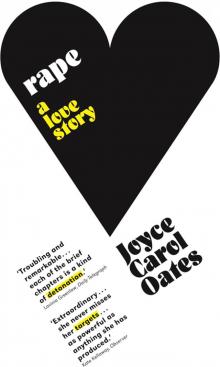 Rape: A Love Story
Rape: A Love Story Lovely, Dark, Deep: Stories
Lovely, Dark, Deep: Stories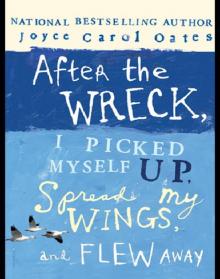 After the Wreck, I Picked Myself Up, Spread My Wings, and Flew Away
After the Wreck, I Picked Myself Up, Spread My Wings, and Flew Away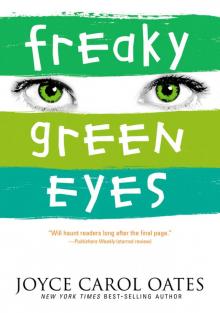 Freaky Green Eyes
Freaky Green Eyes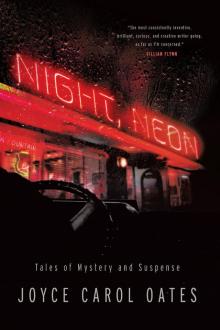 Night, Neon
Night, Neon I Am No One You Know: And Other Stories
I Am No One You Know: And Other Stories Black Water
Black Water Expensive People
Expensive People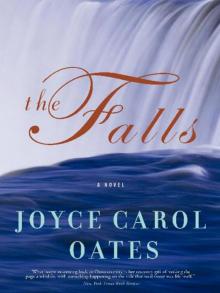 The Falls
The Falls Soul/Mate
Soul/Mate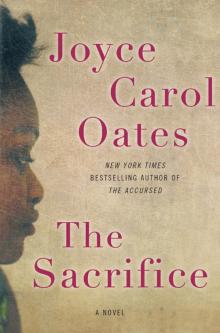 The Sacrifice
The Sacrifice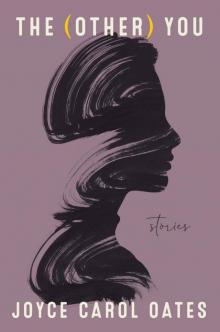 The (Other) You
The (Other) You What I Lived For
What I Lived For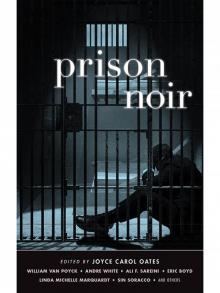 Prison Noir
Prison Noir High Crime Area: Tales of Darkness and Dread
High Crime Area: Tales of Darkness and Dread Faithless: Tales of Transgression
Faithless: Tales of Transgression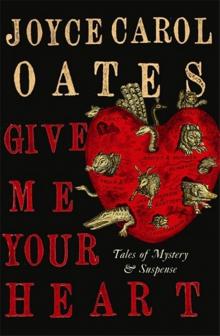 Give Me Your Heart: Tales of Mystery and Suspense
Give Me Your Heart: Tales of Mystery and Suspense The Rescuer
The Rescuer A Book of American Martyrs
A Book of American Martyrs American Melancholy
American Melancholy Double Delight
Double Delight Big Mouth Ugly Girl
Big Mouth Ugly Girl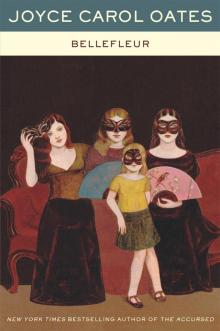 Bellefleur
Bellefleur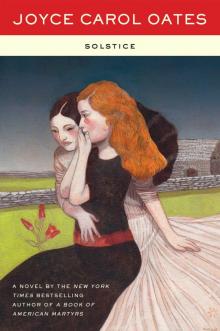 Solstice
Solstice Big Mouth & Ugly Girl
Big Mouth & Ugly Girl Evil Eye
Evil Eye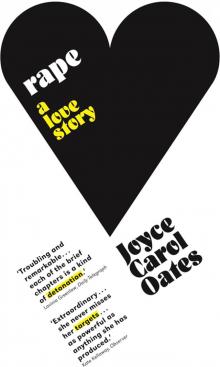 Rape
Rape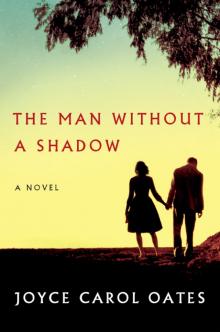 The Man Without a Shadow
The Man Without a Shadow Missing Mom
Missing Mom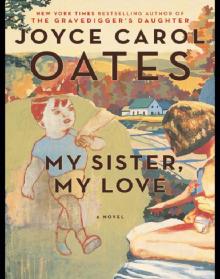 My Sister, My Love
My Sister, My Love The Gravedigger's Daughter
The Gravedigger's Daughter Beautiful Days
Beautiful Days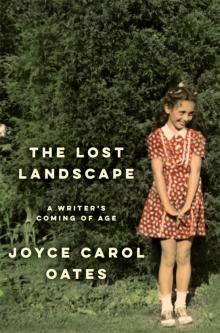 The Lost Landscape
The Lost Landscape Daddy Love
Daddy Love Dreams from the Witch House: Female Voices of Lovecraftian Horror
Dreams from the Witch House: Female Voices of Lovecraftian Horror The Tattooed Girl
The Tattooed Girl Give Me Your Heart
Give Me Your Heart In Rough Country
In Rough Country The Journal of Joyce Carol Oates
The Journal of Joyce Carol Oates Black Dahlia & White Rose: Stories
Black Dahlia & White Rose: Stories High Crime Area
High Crime Area Lovely, Dark, Deep
Lovely, Dark, Deep A Widow's Story
A Widow's Story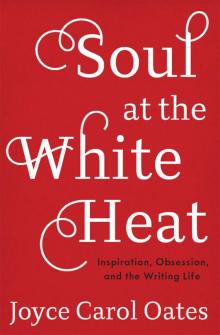 Soul at the White Heat
Soul at the White Heat Wild Nights!
Wild Nights!